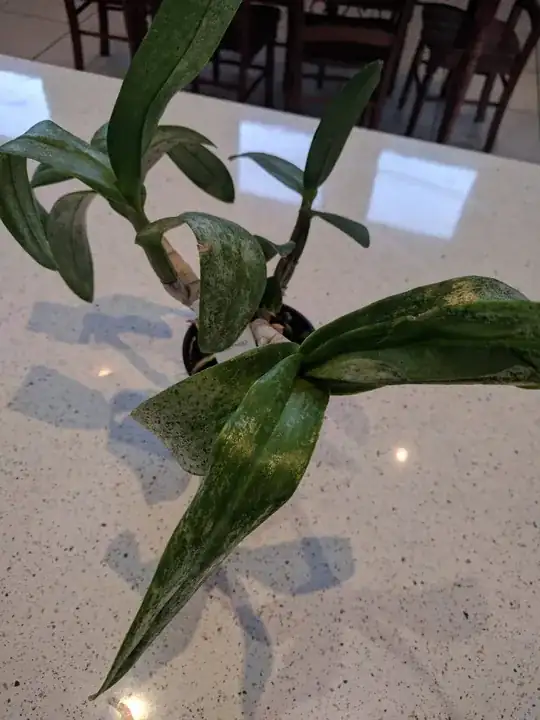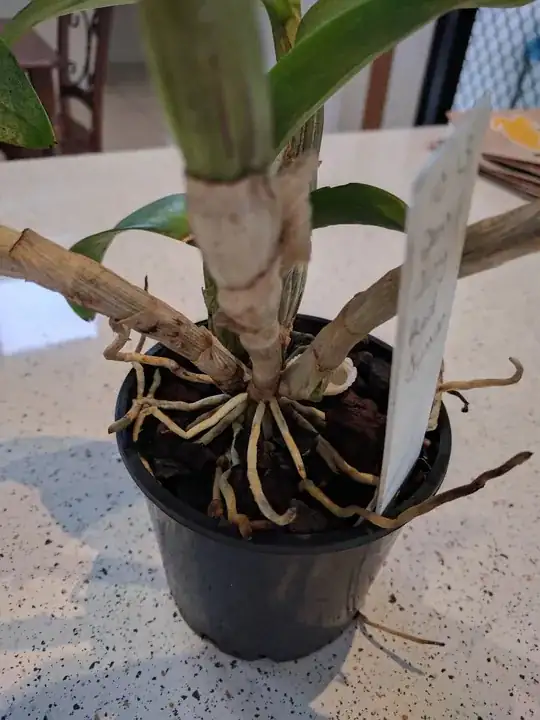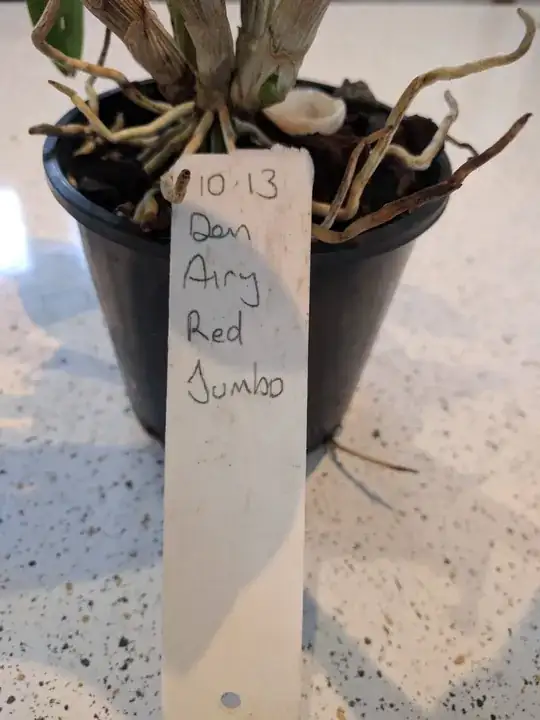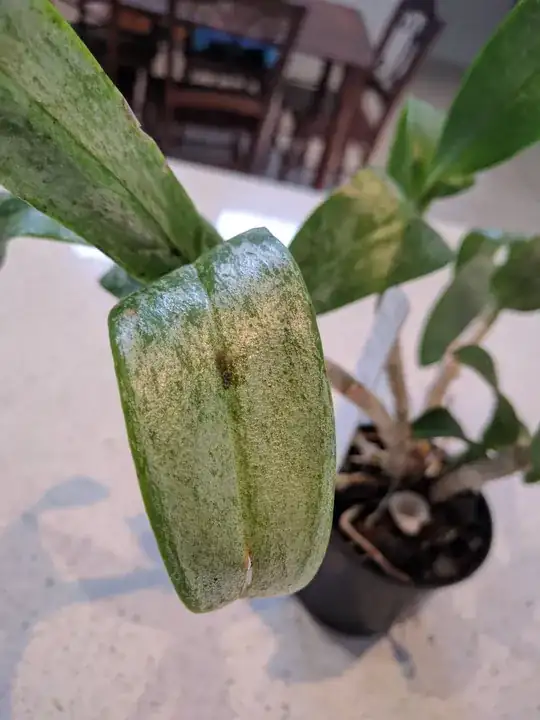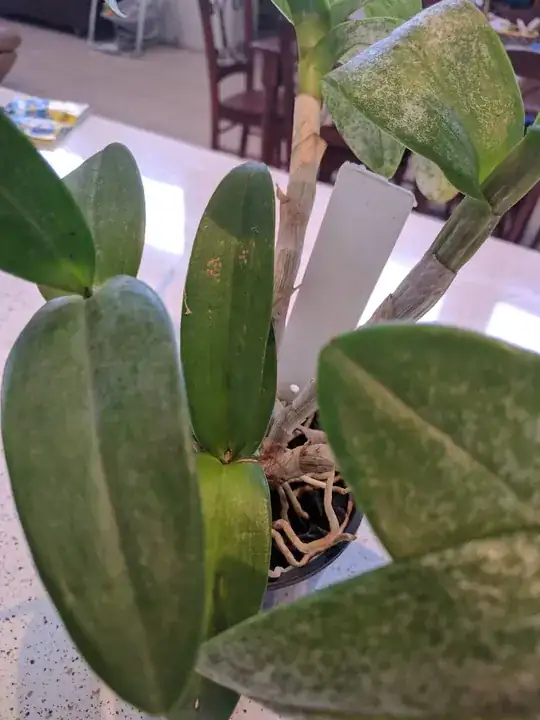From appearances, your orchid looks like a dendrobium. It's not true that orchids can be watered with a water spray bottle. During active growth, the planting mix should never be allowed to become too dry. The best way to check is to press a finger into the growing mix. If you can feel moisture, it doesnt need watering yet. When it's resting, the mix can be allowed to dry more. Dendrobium never have true dormancy like plants do in more northern climates but most people rest them in winter. Since you're in a tropical region, you don't need to.
Rather than keeping out of sun, if you have a place that gets a few hours early morning sun, your orchid will benefit from it. But afternoon sun is too hot and strong. Otherwise provide it with filtered sunlight. Without energy from adequate light, plants can't make enough food stores for flowering.
Have you ever fertilized the orchid in 3+ years? It should be given liquid fertilizer diluted 1/4 strength at every watering during active growth. A balanced orchid fertilizer is best if you're not sure what to use. Sometimes when an orchid doesn't flower, it can be jump-started with a high phosphorus fertilizer. In fertilizers, the middle number listed is fertilizer. For example, 10-10-10 is 10% each of nitrogen, phosphorus and potassium. A high phosphorus fertilizer might be 10-30-10.
Dendrobiums don't mind being in a smaller pot as long as the planting mix drains well. Most orchid mix have loose larger pieces and don't contain soil. A mix might contain shredded bark and sphagnum moss. Drainage is important. You should find orchid potting mix with no problem.
Don't worry about the roots showing. Most orchids are epiphytes (meaning they grow on tree branches on any moss and soil on it) and it's normal for roots to grow outward all over. Here's a YouTube video showing how to repot your dendrobium.
